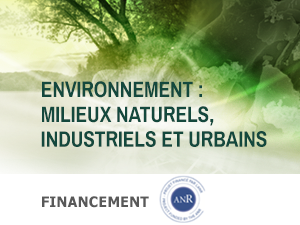Predicting both climate and temperature evolution requires, among other parameters, to quantify properly the contribution of clouds through a better understanding of their formation. Clouds form by condensation of water vapor on particles (aerosols) of varying morphology and chemical composition and with sizes down to a sub-micron level. WATEM will study the early stages of this process in situ in a Transmission Electron Microscope (TEM). Providing the required spatial resolution, the TEM also brings morphological (2D/3D), structural and chemical information. The challenge to control thermodynamic conditions for condensation of liquid droplets from a humid gaseous environment will be taken up in a dedicated Environmental TEM (ETEM) working at a variable partial pressure (< 20 mbar as in ESEM: Environmental Scanning EM).
We will develop a tip for a sample holder based on a Peltier cooled micro-device allowing observing solid, liquid and vapor phases at the same time, and evolution at their interfaces, as well as pure liquid without sealing membranes.
Based on this technological development, WATEM will highlight the scientific expertise of three teams whose expertise are both complementary and with sufficient overlap so that effective communication and exchanges can take place together with effective intra- and inter-team work thus providing a solid basis for the success of the project: IRCELYON (atmospheric chemistry, liquid/gas ETEM, liquid/gas ESEM), MATEIS (liquid/gas ETEM, liquid/gas ESEM, electronic tomography, specific sample holders) , MAJULAB (micro/nano devices, specific sample holders, ESEM/ETEM).
WATEM will revolve around 5 scientific/technological WP (in addition to the WP concerning the project management). WP1 concerns the realization of the Peltier cooled micro-device adaptable both to an ESEM and to an existing sample holder in an ETEM. This original solution will be completed by other existing alternatives a priori less effective from the point of view of fine control of the temperature, and therefore of the conditions of condensation of water on the aerosols. These alternatives allow nevertheless to manageable the risk of delay in the development of our prototype. In WP3, WP4 and WP5 particular attention will be given to the effects of irradiation so as to minimize their effect on the observed phenomena and to develop relevant experiment protocols. WP3 will validate and calibrate the Peltier micro-device in the ESEM by studying the water condensation on large collections of model artificial aerosols (statistical studies) thus taking advantage of the space existing in the ESEM chamber and in order to facilitate the
experiments to be carried out in the ETEM; tomography approaches in ESEM, under condensation conditions, will also be tested. A similar approach in ETEM will be performed in WP4, taking advantage of the results acquired in WP3: validation of the Peltier micro-device in ETEM on the same model aerosols and measurements of the deliquescence (DRH) and efflorescence (ERH) relative humidity. We will also study the role of the mixed nature of aerosols (for instance: inorganic/organic) on hygroscopicity using analytical methods (EDX/EELS), complementary to imaging, as well as electronic tomography. Finally, in WP5 we will tackle the study of natural aerosols (atmospheric sampling) in ETEM; here the main challenge will be to be able to follow in real-time the evolution of the solid/liquid and liquid/vapor interfaces essential for an understanding of the growth phenomena of water nanodroplets and their implication in cloud formation.
The successful development of the approach an strategy proposed in WATEM will allow extension to studies in other fields: suspension of nano-objects in liquid, crystallogenesis in nano-confined media, evolution of biological sub-micron systems, …


